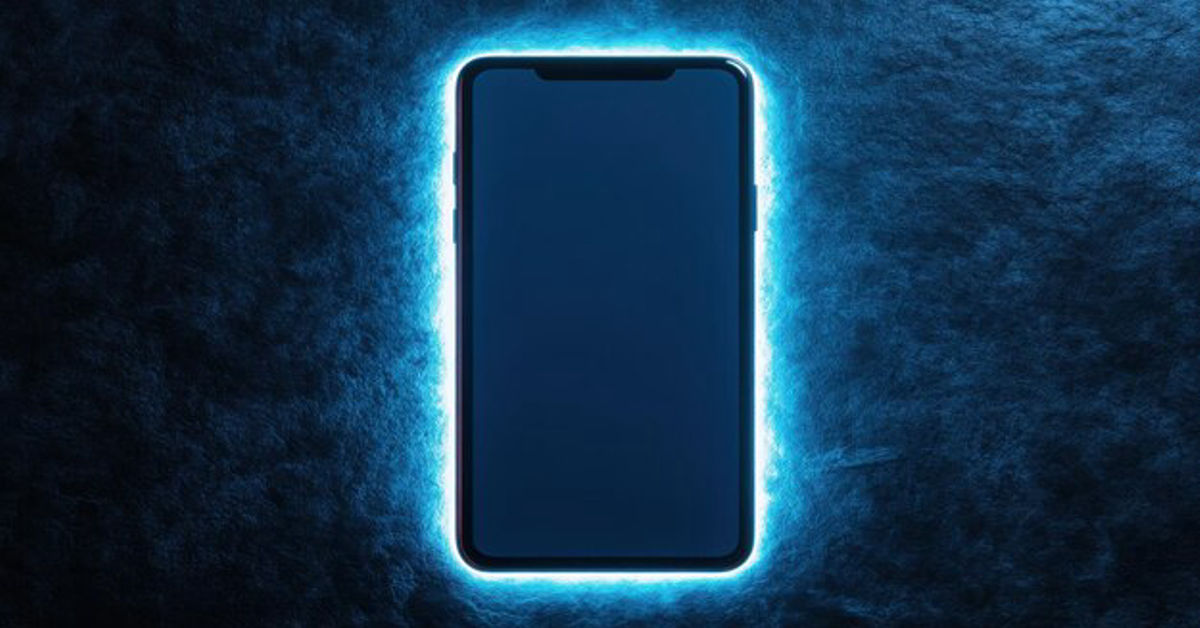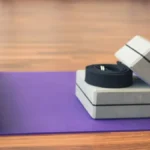Every smartphone user has a unique way of interacting with their device and Samsung understands this better than most. With their highly customizable One UI software and advanced personalization tools, Samsung phones allow you to completely reimagine the way your device looks and functions. The concept of samsung phone layout ideas goes beyond arranging icons on a screen. It’s about crafting an experience tailored to your lifestyle, whether that means creating a distraction-free workspace, a vibrant and artistic digital canvas, or a minimalist setup that keeps only what matters most at your fingertips.
In today’s digital age, smartphones are extensions of our identity. They hold our schedules, creative projects, entertainment, and even our daily wellness tools. By customizing layouts, you’re not just making your device look better — you’re improving efficiency, reducing digital clutter, and enhancing usability. This article explores practical strategies, professional tips, and creative inspiration for transforming your Samsung phone layout into something uniquely yours.
Why Samsung Phone Layout Customization Is Essential
A phone’s default layout often feels generic and fails to capture the personality or needs of its owner. Samsung’s interface, however, gives users freedom to break away from defaults. The importance of customizing layouts lies in both function and design. From a functional perspective, organizing apps, widgets, and folders strategically can save seconds every time you pick up your phone — which translates into hours over a year.
For example, a busy entrepreneur may set up a primary home screen dedicated solely to communication apps like Gmail, Slack and WhatsApp with widgets that track stock prices and appointments. A student may prefer layouts where note-taking apps, flashcards, and study timers dominate the first page, reducing the temptation of games or social media. Beyond function, there’s also the psychological benefit. A clean, aesthetically pleasing layout can reduce stress and create a sense of order, while a creative and colorful setup can inspire motivation and joy. Samsung empowers users to experiment until their device feels like a natural extension of their lifestyle.
Core Principles of Crafting an Ideal Layout
Designing a Samsung phone layout is like arranging the furniture in your home. Every element has to serve a purpose while fitting the overall style. The following principles form the foundation of effective customization:
- Accessibility: Place your most-used apps on the bottom row or in easy-to-reach positions. Think about thumb movement — Samsung’s One UI already adjusts menus lower on the screen for easier reach.
- Categorization: Group apps into folders based on use cases. For instance, “Work,” “Finance,” “Entertainment,” or “Wellness.”
- Balance: Avoid overloading one page with too many apps. Instead, create a flow where each page serves a theme or purpose.
- Widgets as Tools: Use widgets to eliminate unnecessary taps. A weather widget saves you from opening an app, while a calendar widget keeps your schedule in plain sight.
- Aesthetics and Mood: Wallpapers and color themes influence how your phone feels. Minimalist themes encourage focus, while bright palettes spark creativity.
- Future Flexibility: Layouts should adapt as your lifestyle changes. Students may later need professional tools, and professionals may explore wellness-focused layouts.
These principles ensure that your design isn’t just attractive, but also practical and sustainable over time.
Popular Samsung Phone Layout Ideas for Every Lifestyle
Samsung devices attract diverse users, from professionals to creative minds. Each group benefits from layouts designed specifically for their needs.
- The Student Layout: Aimed at learning efficiency. Apps like Samsung Notes, Google Keep, or Quizlet can dominate the home screen. A timer widget helps with focus sessions, while a calendar widget highlights exam dates.
- The Professional Layout: Business tools such as Outlook, Teams, and Google Drive should take center stage. Paired with productivity widgets like reminders and task managers, this setup helps streamline workdays.
- The Minimalist Layout: Essential apps only. Clean wallpaper, small app grid, and a clutter-free interface that makes the phone feel calm and distraction-free.
- The Gamer Layout: Focuses on performance. The Game Launcher shortcut, Discord, and performance booster widgets are arranged on the first screen for immediate access.
- The Creative Layout: Emphasizes artistic themes and self-expression. Unique wallpapers, custom icons, and gallery widgets transform the home screen into a design canvas.
These layouts are not rigid — users can mix styles, blending productivity with creativity or minimalism with entertainment.
Layout Inspirations for Different Users
| User Profile | Layout Style | Key Features | Sample Apps/Widgets |
| Students | Academic-focused with study shortcuts | Notes, reminders, timers, flashcards | Samsung Notes, Quizlet, Google Keep |
| Professionals | Work-centric productivity | Email widget, calendar, cloud storage | Outlook, Google Drive, Teams |
| Minimalists | Simple and distraction-free | Few apps, muted wallpaper | Clock, Weather, Gallery |
| Gamers | Fast access and performance tracking | Game Launcher, performance booster | Game Booster, Discord, Twitch |
| Creatives | Aesthetic, artistic personalization | Custom themes, image widgets | Canva, Pinterest, Gallery |
Harnessing Samsung One UI for Layout Design
One UI is the foundation of Samsung’s customization experience. Unlike stock Android, One UI is built with ergonomics in mind. By lowering menus and controls, it makes single-handed use much easier. But beyond design, it gives deep customization options. Users can choose between different grid sizes for app arrangement, adjust icon sizes for a cleaner or more detailed look, and apply themes to change fonts, icons and color palettes.
For samsung phone layout ideas, One UI’s dark mode is especially popular. It provides a sleek visual style while also improving battery efficiency on AMOLED displays. Another valuable feature is edge panels, which let you swipe from the side to quickly access apps, contacts, or tools without leaving your current screen. Combined with split-screen multitasking, One UI makes it possible to create layouts that are not just visually appealing but also highly functional for productivity, creativity, or entertainment.
The Power of Widgets in Samsung Layouts
Widgets bring static layouts to life. They turn your phone into an interactive dashboard where information is delivered at a glance. For productivity, widgets like Google Calendar or Microsoft To-Do keep important tasks in focus. For lifestyle, fitness trackers and weather widgets make planning your day easier. For creativity, photo frame widgets allow users to showcase personal memories or inspiration boards directly on their home screens.
Samsung allows resizing widgets, meaning you can dedicate more space to essential tools and keep decorative ones smaller. Third-party widgets from the Galaxy Store also open up new possibilities, including minimalist designs or highly interactive dashboards. Imagine a layout where one screen functions as your “command center,” showing weather, news, calendar, and health updates, while another screen acts as your “relaxation hub,” showcasing music controls, gallery photos, and entertainment shortcuts. Widgets make layouts smarter and more immersive.
Must-Have Widgets for Smarter Layouts
| Widget Type | Primary Function | Ideal For |
| Weather | Daily and hourly forecast | Travelers, commuters, outdoor workers |
| Calendar | View upcoming events instantly | Professionals, students |
| Music | Playback control and album display | Music enthusiasts, gym-goers |
| Notes/To-Do List | Quick reminders and lists | Productivity seekers, busy families |
| Fitness/Health | Track steps, calories, and sleep | Health-conscious individuals |
| Photo Gallery | Display rotating images | Creative users, memory keepers |
Unlocking Creativity with Samsung Good Lock
Good Lock is where Samsung truly shines in customization. This collection of modules transforms your device into a fully personalized tool. With Home Up, you can redesign your home screen grid, experiment with folder designs, and change how recent apps appear. LockStar lets you create lock screen experiences that include unique backgrounds, clock positions, and quick shortcuts. QuickStar gives you control over the quick settings panel, allowing you to rearrange toggles and apply custom color themes.
Perhaps the most creative module is Theme Park, which allows you to design your own themes from scratch. You can match wallpapers with specific color palettes, apply custom icon packs, and even change fonts. For multitaskers, MultiStar enhances split-screen use, enabling apps to run simultaneously with smoother controls. Collectively, these modules unlock layout possibilities far beyond default settings, giving you full freedom to design a Samsung interface that feels unique and innovative.
Good Lock Modules for Personalization
| Module | Focus Area | What It Lets You Do |
| Home Up | Home screen, folders, task changer | Adjust grid, redesign folders, multitask |
| LockStar | Lock screen customization | Add shortcuts, change clock, creative locks |
| QuickStar | Notification and quick settings panel | Custom colors, toggle arrangement |
| Theme Park | Themes and icons | Design your own themes, apply icon packs |
| MultiStar | Multitasking improvements | Enhance split-screen and pop-up views |
Minimalist vs. Creative Approaches
When customizing Samsung layouts, two dominant approaches emerge: minimalist and creative. Minimalists prefer stripped-down designs that prioritize efficiency. Their home screen may feature a calming wallpaper, only a few apps, and essential widgets like time and weather. This approach is perfect for those who want to reduce digital distractions and focus only on what matters.
On the other side, creatives see their phone as a canvas. They experiment with vibrant wallpapers, artistic themes, and imaginative widget placements. Some turn their screens into mood boards, while others design layouts inspired by movies, seasons, or personal hobbies. Samsung’s flexibility means you don’t have to choose one or the other — you can keep one page minimalist for productivity and another page colorful and creative for personal expression. The beauty of Samsung’s system lies in how easily you can switch styles whenever you want.
Conclusion
Samsung phones offer an unparalleled level of customization that transforms them from simple communication tools into deeply personal devices. With One UI’s thoughtful design, widgets that add functionality and Good Lock’s advanced features, users have endless possibilities to experiment with layouts. Whether you lean toward a minimalist aesthetic, a creative artistic style, or a balanced mix of both, samsung phone layout ideas empower you to design an interface that enhances your lifestyle.
The key is to view customization as a reflection of your needs and personality. Layouts should evolve with you, adapting as your daily priorities shift. Start small with wallpapers and widget arrangements, then explore deeper customization through Good Lock modules. Your Samsung device isn’t just a phone — it’s a digital companion that can be as unique as you are.
FAQs on Samsung Phone Layout Ideas
1. How do I start customizing my Samsung phone layout?
Begin with One UI settings by adjusting grid size, rearranging apps, and experimenting with widgets. From there, explore themes and Good Lock modules.
2. Which Samsung app is best for advanced customization?
Good Lock is the most powerful tool, offering modules that let you control everything from the lock screen to multitasking layouts.
3. Can layouts improve productivity?
Yes, strategic layouts reduce app-hunting time, organize workflows, and ensure critical information is always visible through widgets.
4. Do I need third-party apps for customization?
Not necessarily. Samsung provides plenty of in-built options, but third-party launchers and widgets can add extra creativity.
5. Can I maintain multiple layout styles?
Absolutely many users create one layout for work and another for personal use, switching wallpapers, themes, and widget setups accordingly.







